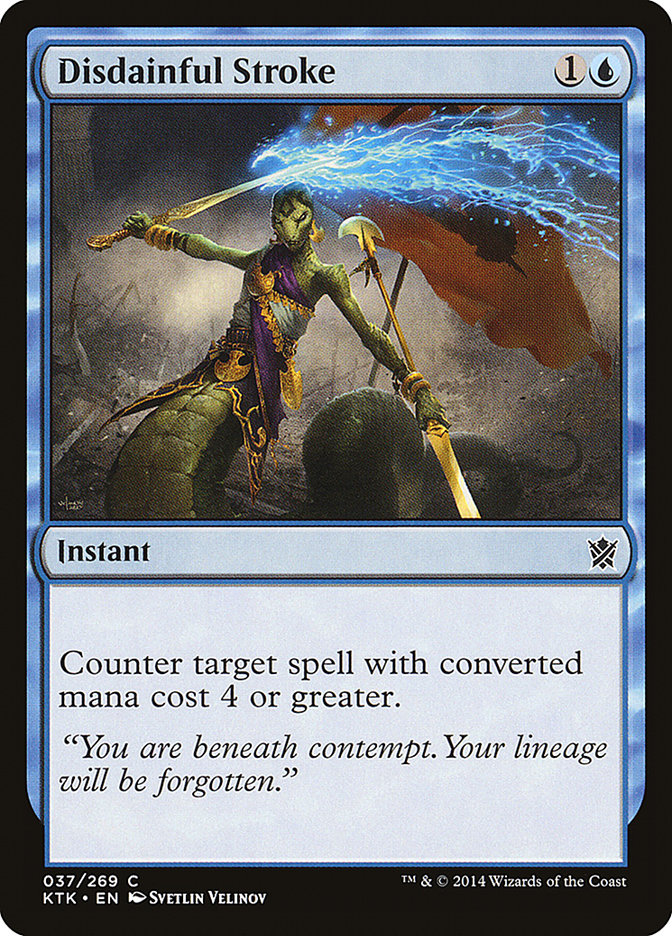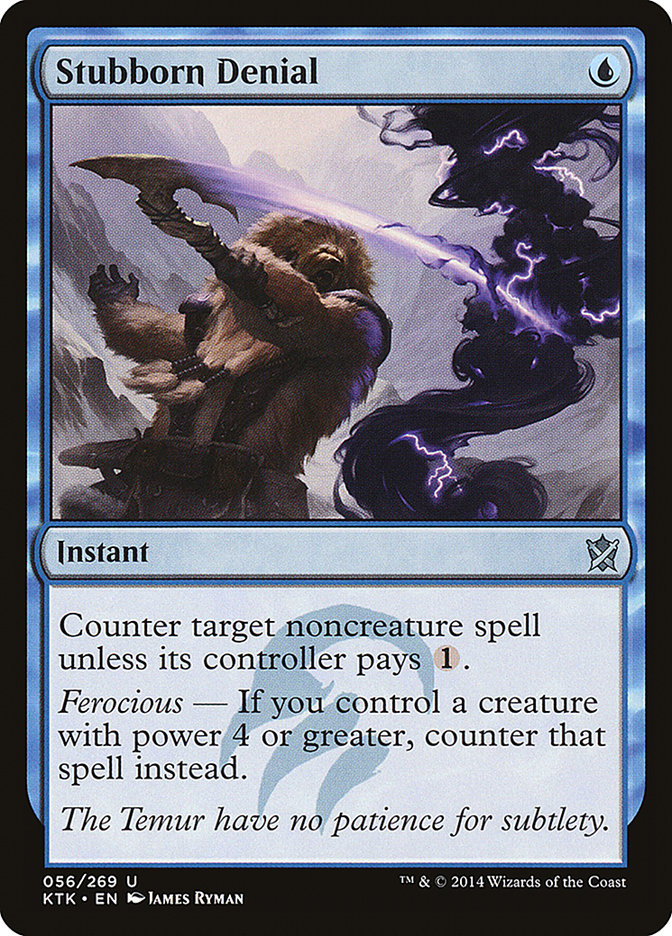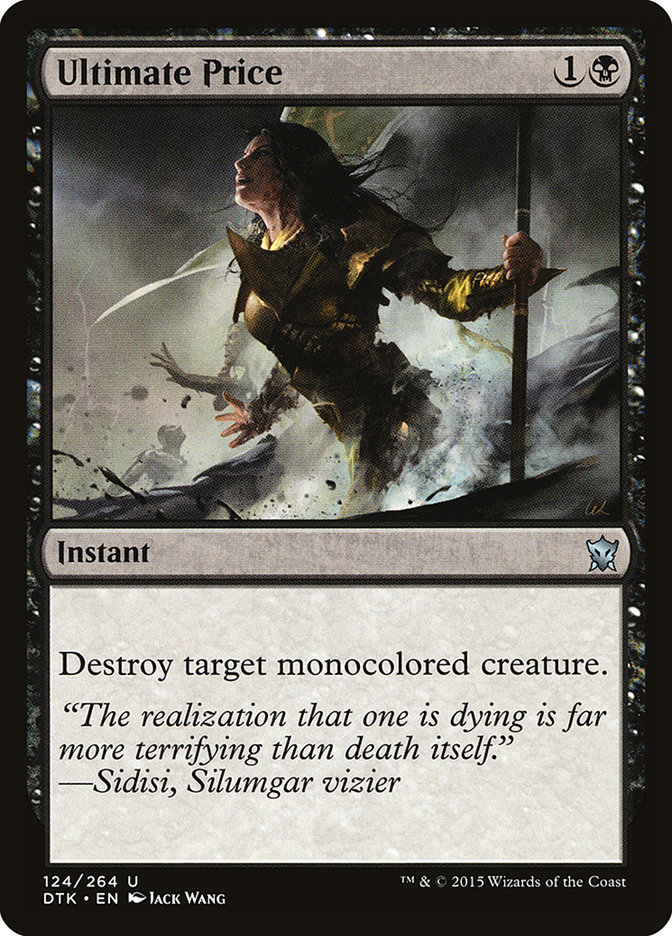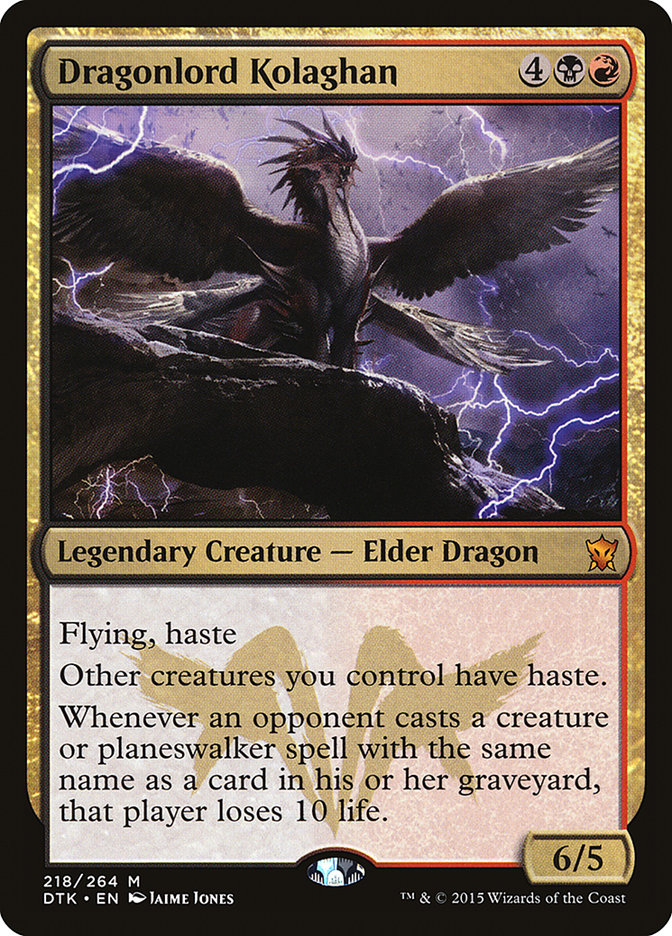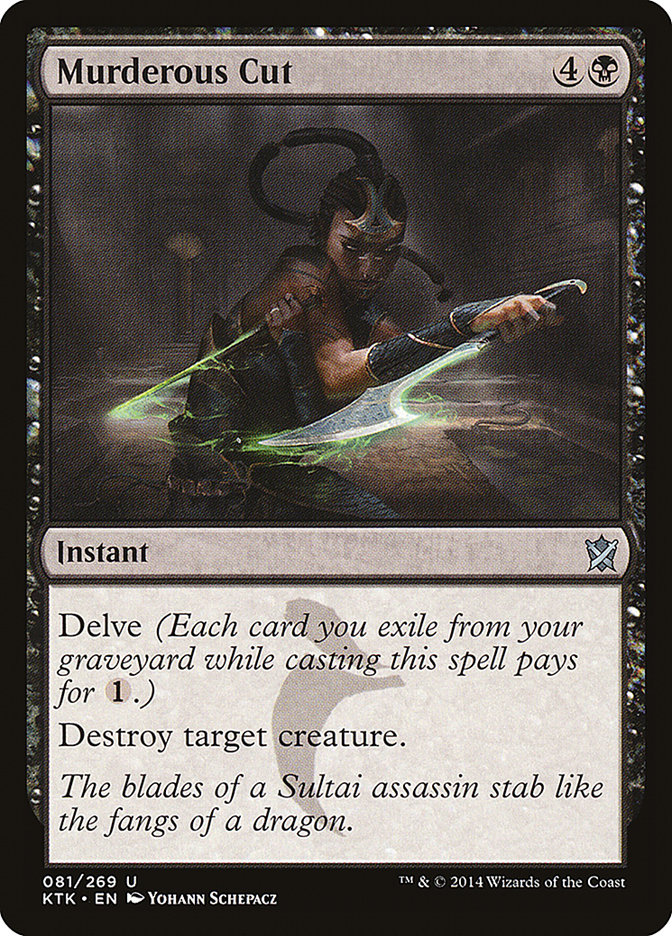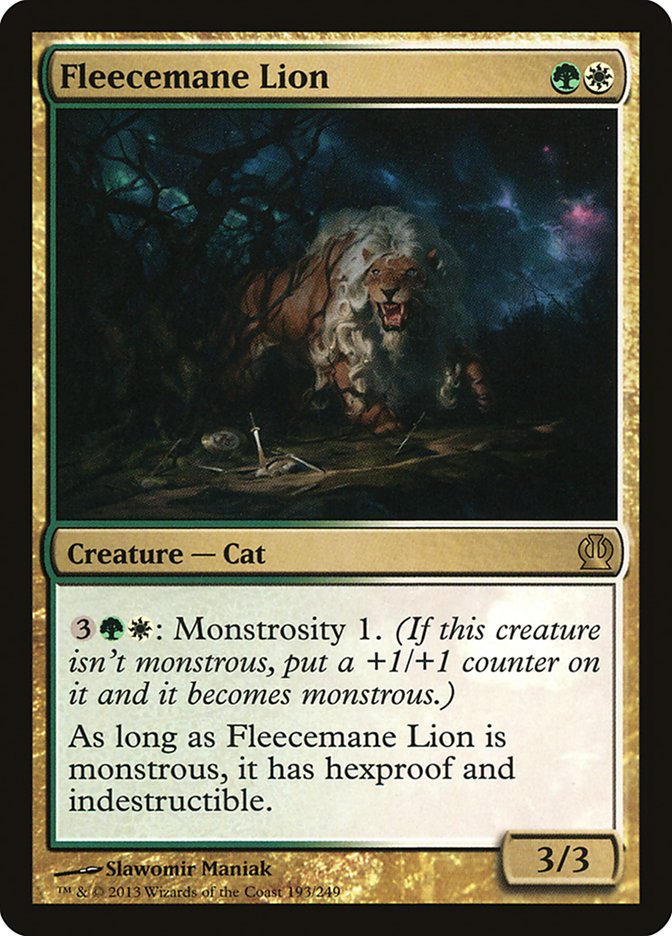It has never felt so good to just fall into my own bed.
As much as it pained me to say goodbye when I flew out of SeaTac, finally getting back home and collapsing into my own bed after being gone for more than a
week, driving across the country, and getting sick; it felt so good it was indescribable.
I may have been on the other side of the country, but I was still keeping tabs on both the Open in Cleveland and the Regional PTQs being tweeted about
around the world. With Esper Dragons taking over the format, G/R Dragons has started to fall to the wayside. Ramp strategies have traditionally had
struggles with control decks packing mass removal, spot removal, and counterspells; which is basically the entire makeup of the Esper Dragons deck.
There is good news, however. With Esper Dragons becoming more and more popular, we are going to see them having to prepare for the mirror more. We are
already seeing this with all the Foul-Tongue Invocations that are seeing play. Thankfully, these type of cards aren’t very good against our strategy, and
with a little sideboard dedication, I think that we can come up with a gameplan that helps.
There was a G/R deck that made it all the way to second place in Cleveland this weekend at the Open, so let’s take a look at it.
Creatures (25)
- 4 Elvish Mystic
- 4 Sylvan Caryatid
- 4 Stormbreath Dragon
- 4 Courser of Kruphix
- 2 Ashcloud Phoenix
- 2 Dragonlord Atarka
- 4 Thunderbreak Regent
- 1 Den Protector
Planeswalkers (3)
Lands (24)
Spells (8)

Brad Fallen played basically my same maindeck from Syracuse with the exception of swapping a Den Protector in for a Crater’s Claws. He also had a second
Den Protector in the sideboard. I do like Den Protector, so much even that I played one in my sideboard in my second place list from SCG Spring States.
In this particular tournament, I was quite unhappy with Den Protector out of the sideboard. As I talked about in that article, for that event I was trying to use it as a pseudo-Snapcaster Mage
and it just didn’t work. Most of the time I would just rather have an actual spell that did something. This definitely becomes a bit different when we get
into the world of having multiple Den Protectors since looping them becomes a real threat, but relying on it solely as a way to re-buy a spell or land just
wasn’t that appealing to me.
However, at States I did play against a handful of control decks, and it felt decent every time I drew it, so I could imagine a world where we try and just
fit two in the maindeck and run with it.
One of the things about this list that I am 100% on board with is going back to Ashcloud Phoenix. This card is so good against the Esper Dragons deck, as
identified by Brad since he even had copies three and four accessible in the sideboard. The more I play with it, the more I like Ashcloud Phoenix, even in
the mirror. One of the strengths of being on the Sylvan Caryatid + Courser of Kruphix plan is that against the other Draconic Roar decks, we are almost
immune to it. Ashcloud Phoenix does give them a target, but I don’t really think that’s enough to warrant keeping them in. Being able to go up to a full
four of them after sideboard seems pretty sweet as a way to gain the initiative in the air.
My big concern with the deck going forward is that there really isn’t a card that we can use that allows us to go over the top of both the midrange decks
and control decks, similar to what we used Rakdos’s Return for. Just some big spell that is going to provide us a huge advantage and seal the deal. I think
that we can go with Mistcutter Hydra as a way to try and push threats through the countermagic that is available, and even though it can still die to
Ultimate Price and Hero’s Downfall, our Thunderbreak Regent and Stormbreath Dragon are already taxing those cards pretty well.
One of the strengths of playing the predecessor to this deck (Jund Monsters) was that its sideboard cards were all pretty flexible. They could perform
multiple roles against a number of decks, but the current cards available to just G/R make it pretty tough to do so. I think that branching out into a
third color might help, but finding which one is best and how to make the mana work is tough.
Blue
If we were to branch out into Temur then we would have access to some of the best sideboard cards in the format. With Frontier Bivouac, the mana won’t be
too tough to make work, and we even have access to some on-color painlands with Shivan Reef and Yavimaya Coast.
The big question though, is what is the payoff for this?
These three cards are what we would gain access to. Having the ability to counter a Dragon out of the Esper Dragons deck could be huge, and it could give
us just enough time to punch through the remaining bit of damage that we need. Countering a key Hero’s Downfall on our Stormbreath Dragon could be clutch
and put the game away. These also give us answers to cards like Elspeth, Sun’s Champion out of the different flavors of Abzan.
The problem with doing something like this is that it is reactive, and my gut tells me that this is not the way we want to be. We are getting
payoffs from our top end cards like Thunderbreak Regent and Stormbreath Dragon by being aggressive and proactive. We are attacking our opponent
and forcing them to have the right answer at the right time, and if they don’t, then they are dead. Adding blue also gives us access to something like
Savage Knuckleblade and Surrak Dragonclaw (which might actually be pretty good right now, to be honest), but I’m still not all that impressed.
Black
Ah Jund, how I miss you. I would give almost anything for the mana to make this work, but I just haven’t been happy with anything that isn’t running Satyr
Wayfinder. Once we go down that route it only makes sense to play Sidisi, Undead Vizier, and that’s just too many five-drops for my liking; unless we cut
Stormbreath Dragon.
Black would give us access to some pretty powerful spells though, that’s for sure.
The problem with this is, what are these cards actually giving us?
Thoughtseize and Duress can be proactive against the Esper Dragons deck, but is it really enough? Possibly if we back it with aggressive threats like
Goblin Rabblemaster and Mistcutter Hydra out of the sideboard. Their deck is filled with redundant answers and card draw like Dig Through Time, so I’m just
not all that thrilled at the thought of destroying my mana for these spells.
The different versions of Kolaghan are pretty sweet, but I’m not convinced they are better than the ten Dragons we already have with Thunderbreak Regent,
Stormbreath Dragon, and Dragonlord Atarka. Also, adding more five and six mana creatures isn’t really the way we want to try and attack the control decks.
The black removal is great when we are thinking about ways to handle creatures like Thunderbreak Regent and Stormbreath Dragon, but like we pointed out
early on in the article, G/R Dragons has been on the decline.
I wish Jund were the route to take, but I just can’t convince myself of it.
White
Naya is still viable, but I’m not sure what we gain. G/R Elspeth was one of the best decks in Theros Block Constructed, and while times have certainly
changed, I think that she’s still pretty great. As an offensive threat that can close the game out all by herself in addition to being able to use her as a
defensive measure killing difficult to handle threats like Stormbreath Dragon and Dragonlord Ojutai with her -3 ability, it might be worth it to go this
route just for Elspeth, Sun’s Champion.
Cards like Fleecemane Lion and Mastery of the Unseen are also playable, but the problem now lies in the fact that these cards aren’t good enough on their
own to beat the control decks.
In the days of straight up U/B Control, we could ride a Mastery of the Unseen to victory since they only had something like Perilous Vault to answer it.
With the addition of the Dragonlords, they can actually just kill us with Dragonlord Ojutai before the Mastery of the Unseen is an actual threat since it
takes some time to get online. Slow and steady, grinding out our opponent with the inevitability that Mastery of the Unseen offers just isn’t enough in the
world of Dragonlords.
In the end, I actually think that the direction to take G/R Dragons is to just forsake the mirror and give up some percentages against the red aggressive
decks and get rid of the Courser of Kruphix/Sylvan Caryatid package to become more aggressive.
Here is what I’m going to be testing out for this weekend. I will not be traveling to GP Toronto or #SCGPORT, but I will be battling in some IQs this
weekend.
Creatures (29)
- 4 Elvish Mystic
- 4 Stormbreath Dragon
- 3 Boon Satyr
- 4 Rattleclaw Mystic
- 2 Ashcloud Phoenix
- 4 Thunderbreak Regent
- 4 Den Protector
- 4 Deathmist Raptor
Lands (23)
Spells (8)

I think that something like this can be just aggressive enough and resilient enough to push through the damage that’s needed to have game against the
control decks while still being decent enough against the rest of the field. As opposed to the Courser + Caryatid version, we are definitely giving up some
ground against the other G/R Dragons decks and the red-based aggressive decks, but I don’t really think that we can be fully prepared for everything that’s
out there.
This is where I am starting at for this week, and while I’m pretty likely to end up on a G/R variant of some sort for this weekend, there is one deck that
may sway me away from it.
A long time ago I fell in love with a deck. I took it to States in Washington and placed in the Top 8 of one of my first big tournaments that I had
actually researched and tested and prepared for, and it was all thanks to Michael J. Flores.
Jushi Blue
, as it was called, was a sweet Mono-Blue Control deck that just didn’t really care what its opponents were doing because jamming Keiga, the Tide Star and
Meloku the Clouded Mirror were just that much better than anything they were doing, it just didn’t matter.
Mike won the Regional PTQ that he went to with a Five-Color Blue Dragons deck that he had worked on with Patrick Chapin, and I have to say that I fell in
love with the deck instantly.
Creatures (10)
Planeswalkers (1)
Lands (27)
Spells (22)

I don’t have too much to say about this deck yet since I haven’t gotten a chance to play any games with it, but I do plan onstreaming with it this week. I suggest that you check out Patrick Chapin’s article here on SCG if you’re interested in learning more about it.
One quote from the article that really resonated with me:
“Our fundamental assumptions about what a deck is capable of changes when you have eight Dragon lands.”
We are in a world of Dragons, and this Five-Color Blue deck is just the tip of the iceberg of what decks are capable of in this new world.
Thanks Sarkhan, you’re quite the Dragon-Bro.

